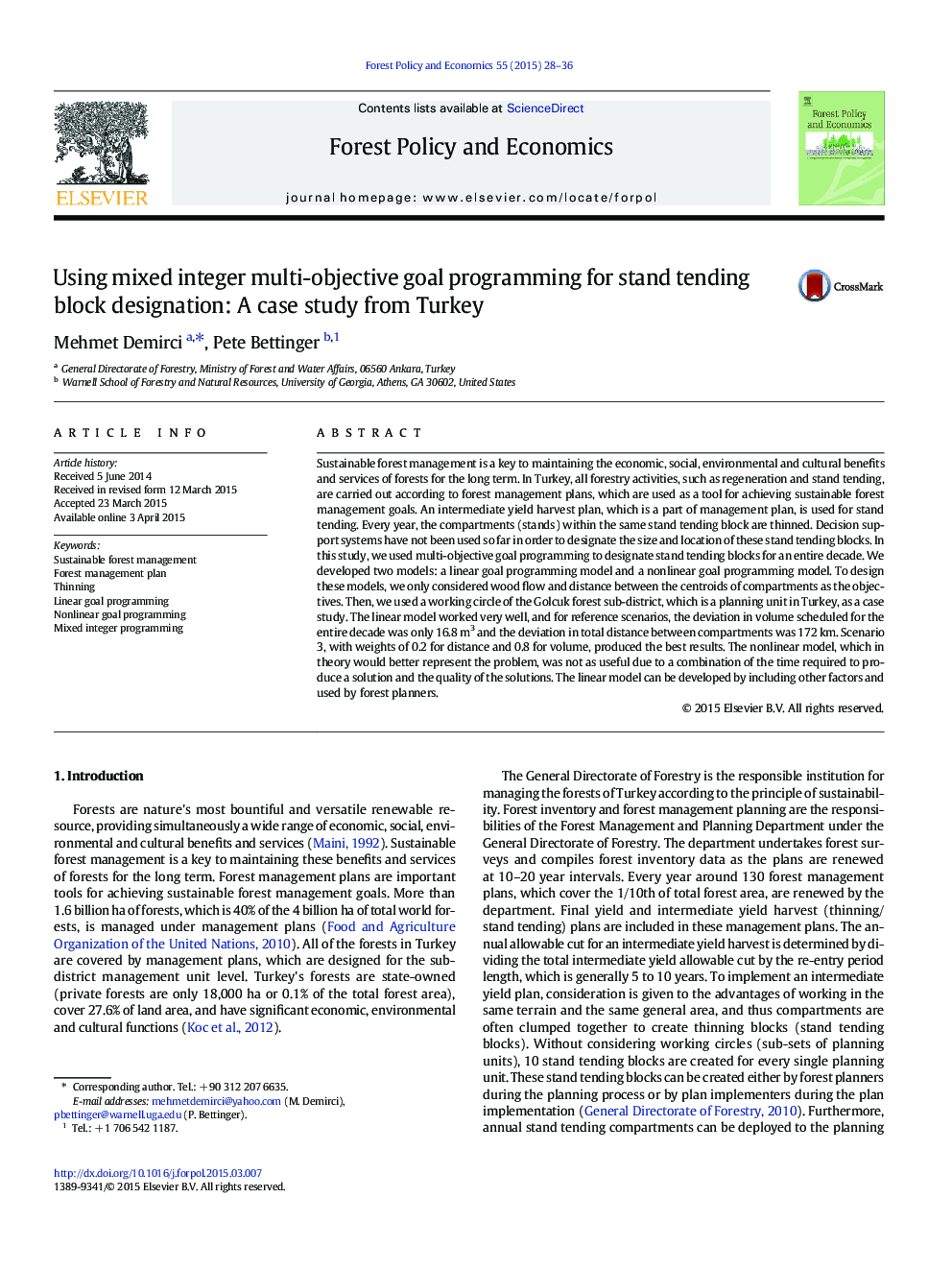| کد مقاله | کد نشریه | سال انتشار | مقاله انگلیسی | نسخه تمام متن |
|---|---|---|---|---|
| 91277 | 159779 | 2015 | 9 صفحه PDF | دانلود رایگان |
• A mixed-integer goal programming model for blocking thinning operations was created.
• A non-linear mixed integer goal programming model was developed as an alternative.
• Objective: minimize deviations in wood produced and spread between compartments
• A range of weights was explored to assess trade-offs.
Sustainable forest management is a key to maintaining the economic, social, environmental and cultural benefits and services of forests for the long term. In Turkey, all forestry activities, such as regeneration and stand tending, are carried out according to forest management plans, which are used as a tool for achieving sustainable forest management goals. An intermediate yield harvest plan, which is a part of management plan, is used for stand tending. Every year, the compartments (stands) within the same stand tending block are thinned. Decision support systems have not been used so far in order to designate the size and location of these stand tending blocks. In this study, we used multi-objective goal programming to designate stand tending blocks for an entire decade. We developed two models: a linear goal programming model and a nonlinear goal programming model. To design these models, we only considered wood flow and distance between the centroids of compartments as the objectives. Then, we used a working circle of the Golcuk forest sub-district, which is a planning unit in Turkey, as a case study. The linear model worked very well, and for reference scenarios, the deviation in volume scheduled for the entire decade was only 16.8 m3 and the deviation in total distance between compartments was 172 km. Scenario 3, with weights of 0.2 for distance and 0.8 for volume, produced the best results. The nonlinear model, which in theory would better represent the problem, was not as useful due to a combination of the time required to produce a solution and the quality of the solutions. The linear model can be developed by including other factors and used by forest planners.
Journal: Forest Policy and Economics - Volume 55, June 2015, Pages 28–36
